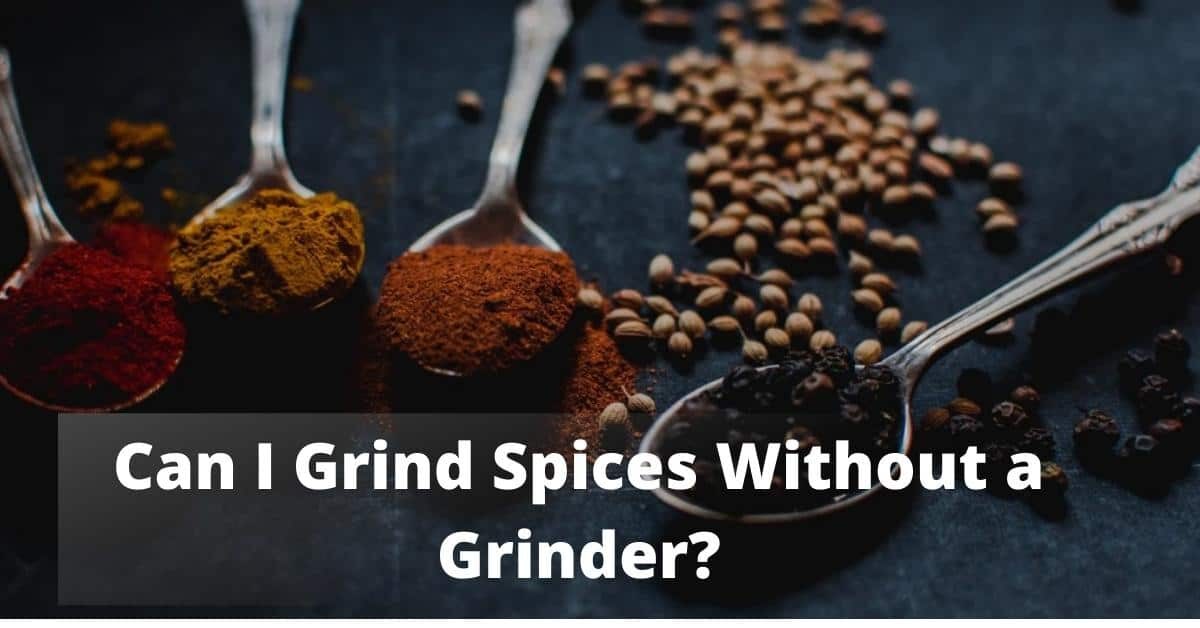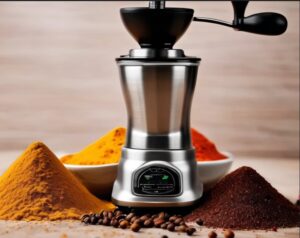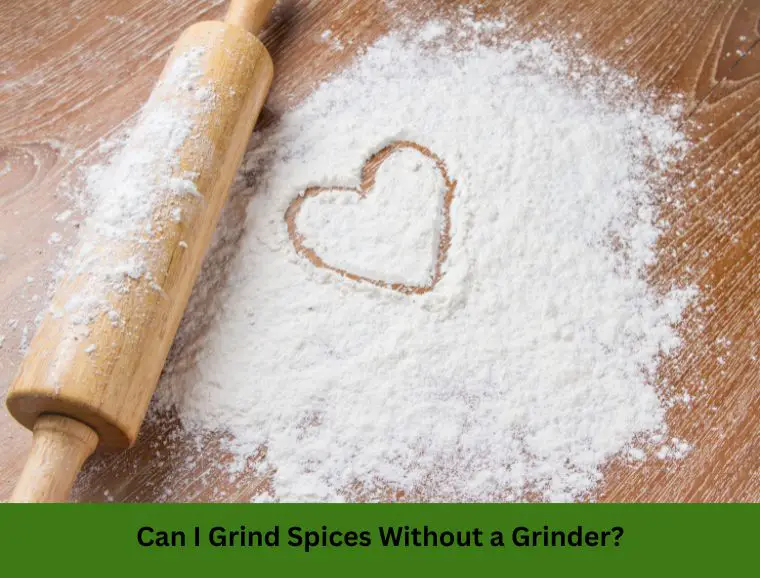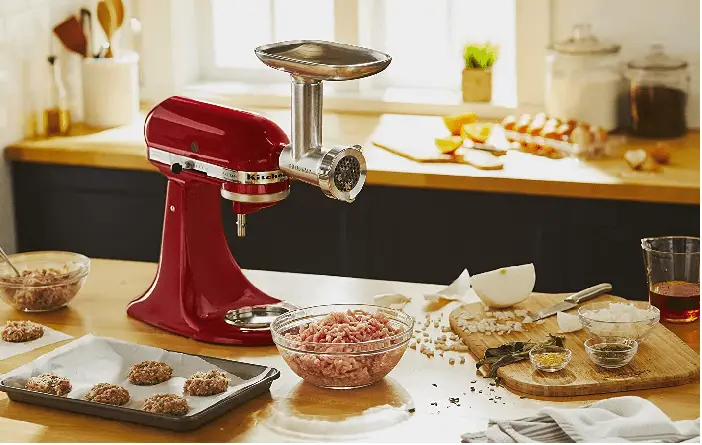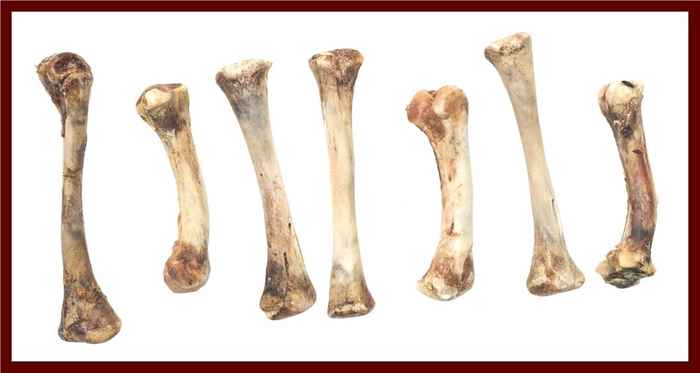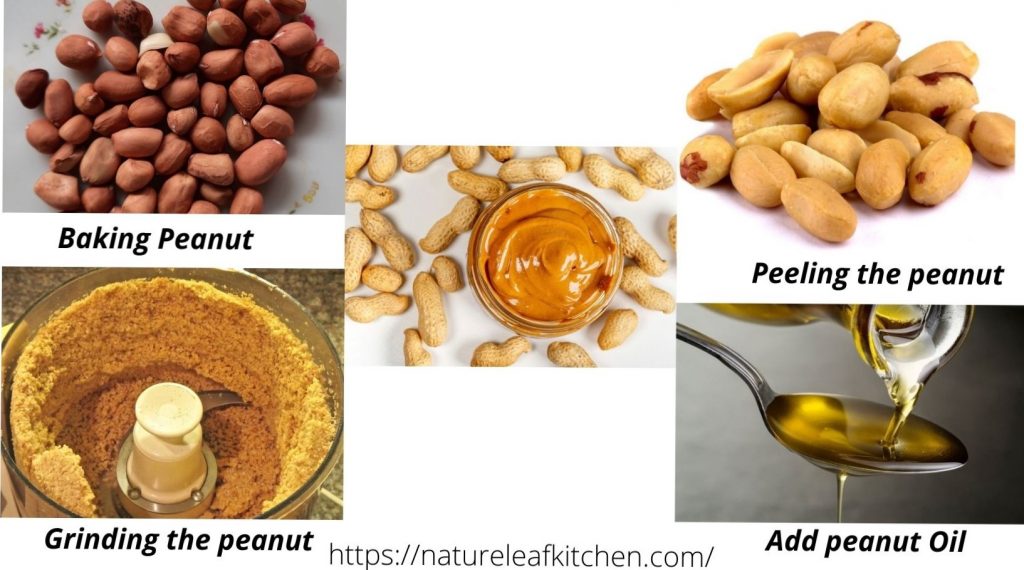If you don’t have a grinder handy, you have several alternatives to grind your spices. You can easily crush the spices and process them further with these methods.
Anyone who likes to work with spices would do well to get the right tools. Depending on your preferences and the quantities used, a mortar, coffee grinder, pepper mill, or even a rolling pin are ideal for crushing all kinds of spices. But when should I use which weapon, and what must I consider? We have put together a brief overview for you here.
If you are beginning your seasoning career and do not have a grinder, you can also use typical household items to help yourself. It costs nothing at first (except for a little muscle power).
1. Grind Spices with a Mortar
The classic is the mortar. Without a doubt, the mortar is the most sensual way of grinding spices, although not always the fastest. A mortar is particularly suitable for crushing small portions of a few teaspoons. Depending on the size of the mortar, sometimes more or less. But no matter how big the mortar is, with large portions it becomes tedious and tedious.
One of the great advantages of the mortar is that you don’t always have to grind fine powder, you can also roughly crush grains and seeds. Many courts build on that.
Briefly, on the choice of mortar, I prefer to use a heavy granite mortar. A slightly rougher (unpolished) surface makes mortaring easier. Steep, high walls ensure that seeds and grains remain in the mortar and do not jump out.
Benefits of Mortar
- Very suitable for small quantities.
- Good control over the fineness of the ground spices.
Disadvantages of Mortar
- With larger quantities exhausting and tedious.
- Fine powder usually needs a lot of patience.
How do you Grind Spices?
- Put all the spices in the mortar. Be careful not to overfill the mortar.
- To start, lightly toast the spices—peppercorns in particular like to jump out of the mortar if they are counteracted by too much force.
- Alternately tap and rotate the tamper until the desired fineness is reached.
- You look particularly aesthetic with the same rhythm.
Tips & Tricks for Mortars
- Roast spices before grinding.
- Grind spices together with salt or sugar.
Mortaring can be easier if you dry-roast the spices in a pan beforehand. This makes them a little more mellow. This extra effort is worth it, especially with hard spices such as caraway or fenugreek. Adding salt or sugar (depending on what fits the recipe) also makes the grinding process easier and ensures a finer powder.
2. Grind Spices with the Coffee Grinder
A good tip for anyone who still has an old-hand coffee grinder in the corner is that coffee grinders can be misused and used as a spice grinder. Even small amounts of spices can be easily ground with the screw grinder.
Compared to the mortar, the coffee grinder also gets along well with very hard spices such as caraway or fenugreek. It becomes problematic only with hard cinnamon sticks because they easily get wedged in the grinder.
If you also use the same grinder for coffee and spices, you have to expect that the spices will smell a little like coffee or smell like spices.
To avoid this, you can grind 1-2 hands of rice with the mill after grinding. It neutralizes the aroma.
Benefits of Coffee Grinder
- Easy and fast.
- Suitable for very small as well as medium-sized quantities of spices.
- Also grinds hard cumin and fenugreek.
- New life can be breathed into old coffee grinders.
Disadvantages of Coffee Grinder
- Hard cinnamon sticks get wedged in the grinder.
- Previous flavors remain in the grinder: it is best to have a grinder exclusively for spices.
Tips & Tricks for Grinding Spices with the Coffee Grinder
Grinding spices with a coffee grinder can be a convenient and efficient way to elevate the flavor of your dishes. However, there are some tips and tricks to ensure you get the best results while preserving your grinder’s and spices’ integrity. Here are some handy tips to help you master the art of grinding spices with a coffee grinder:
- Dedicated Grinder: Consider using a dedicated coffee grinder for grinding spices to avoid flavor transfer between coffee beans and spices. Alternatively, thoroughly clean your grinder before and after each use to remove any residual flavors.
- Dry Cleaning: Before grinding spices, clean the grinder by running a small amount of dry rice or bread through it. This helps remove any lingering coffee grounds and absorbs oils from previous grinds.
- Batch Size: Avoid overloading the grinder with spices. Grinding smaller batches at a time ensures more consistent results and prevents the grinder from becoming overloaded, which can affect performance.
- Uniform Size: For even grinding, ensure that the spices are of a uniform size before placing them in the grinder. This helps achieve a consistent texture and prevents uneven grinding.
- Pulse Technique: Use the pulse function on your grinder rather than continuous grinding. Pulse in short bursts to control the texture and prevent overheating, which can affect the flavor of the spices.
- Cooling Periods: Allow the grinder to cool between batches to prevent overheating. Grinding spices continuously for extended periods can cause the grinder to overheat, affecting both its performance and the quality of the ground spices.
- Cleaning After Use: After grinding spices, clean the grinder thoroughly to remove any residual oils and spice particles. Use a brush or a damp cloth to wipe down the grinder and remove any leftover spices.
- Storage: Store ground spices in airtight containers away from heat, light, and moisture to preserve their flavor and aroma. Label containers with the name and date of the spices for easy identification.
By following these tips and tricks, you can make the most out of your coffee grinder for grinding spices, ensuring flavorful and aromatic results every time. Happy grinding!
3. Grind Spices With a Pepper Mill as a Mortar Alternative
A pepper mill is a wonderful alternative to a mortar because you can use it to crush peppercorns.
Pepper mills are designed to crush and grind peppercorns but can also be used to grind other whole spices such as cloves, coriander seeds, cumin seeds, and more. Fill the pepper mill with the spice of your choice, adjust the grind settings to your preference, and then twist the top to grind the spices into a fine powder. This method can be convenient and efficient, especially when you need to grind small amounts of spices quickly. Just clean the pepper mill thoroughly between uses to avoid cross-contamination of flavors.
Here are Steps to Grind Spice with a Pepper Mill
- If the grains are slightly larger, you may need to coarsely chop them before putting them in the pepper mill.
- Transfer the peppercorns to another container for a short time so that you can fill the spices into the pepper mill.
- This method is one of the easiest as the grinder does the crushing and grinding.
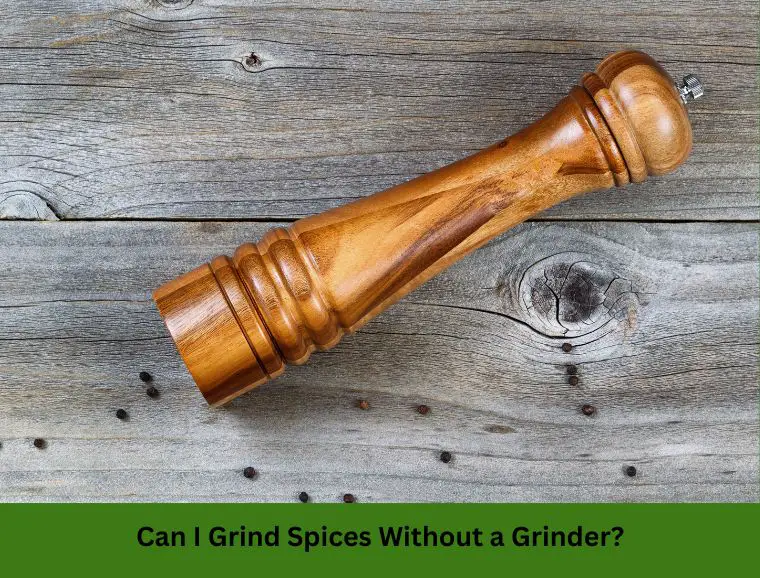
4. Crush Spices with a Rolling Pin
Using a rolling pin to crush spices can be a handy alternative without a mortar and pestle. It’s a simple method that yields satisfying results with minimal effort.
You are grinding spices with a cup base and co. grinder is a convenient way to achieve freshly ground spices for your culinary creations. Whether you’re enhancing the flavor of a dish or crafting homemade spice blends, this method ensures consistency and potency in your spices.
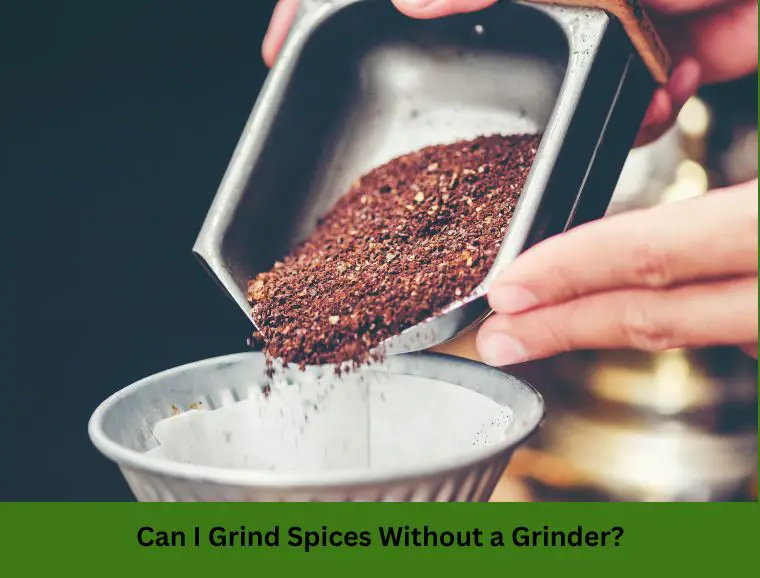
Steps:
- Begin by selecting the spices you want to grind. Whole spices like peppercorns, cumin seeds, coriander seeds, and cloves work well with this method.
- Fill the cup of the grinder with the desired amount of whole spices. Avoid overfilling to ensure effective grinding.
- Place the lid securely onto the cup base, ensuring it is tightly closed to prevent any spillage.
- Hold the cup base firmly with one hand and the co. grinder handle with the other hand.
- Rotate the handle clockwise in a smooth and consistent motion, applying gentle pressure as you grind the spices.
- Continue grinding until the spices reach your desired consistency. For a finer grind, you may need to rotate the handle for a longer duration.
- Once the spices are ground to perfection, remove the lid from the cup base and carefully transfer the freshly ground spices to a container for storage or immediate use.
- Clean the cup base and co. grinder thoroughly after use to remove any leftover spice residue, ensuring optimal performance for future grinding sessions.
Using a cup base and co. grinder provides an efficient and effortless way to grind spices, allowing you to unlock the full flavor potential of your favorite spices in every dish you prepare.
Tricks & Tips For Grind Spices Without a Grinder
Industrially ground spices have already lost a large part of their aroma before they leave the factory floor. Because essential oils evaporate in a very short time – and with it the valuable taste. Anyone who knows the difference between ground pepper from the mill and the finished product can guess how much better freshly crushed cardamom, home-grated mace, or coriander seeds roasted and crushed in the pan taste.
-
Choose the Right Tools: Invest in quality spice grinders or mortar-and-pestle sets that suit your needs. Electric spice grinders are convenient for large quantities, while mortar and pestle sets offer precision and control for smaller batches.
-
Toast Whole Spices: Toasting whole spices before grinding can enhance their flavor and aroma. Simply heat a dry skillet over medium heat, add the whole spices, and toast them until fragrant, stirring frequently to prevent burning.
-
Grind in Batches: Avoid overloading your grinder with spices, as this can result in uneven grinding. Instead, grind spices in small batches to ensure a consistent texture and flavor.
-
Adjust Grind Size: Different recipes may require spices to be ground to varying degrees of coarseness or fineness. Adjust the grind size on your grinder or the pressure applied when using a mortar and pestle to achieve the desired consistency.
-
Freeze Before Grinding: For oily spices like cloves or cinnamon sticks, freezing them for a short time before grinding can make the process easier and prevent clumping.
-
Pulse Technique: When using electric spice grinders, employ a pulsing technique rather than continuous grinding. This helps prevent overheating and ensures a more even grind.
-
Clean and Maintain Your Equipment: Regularly clean your spice grinder or mortar and pestle to prevent cross-contamination of flavors and maintain optimal performance.
-
Store Ground Spices Properly: Once ground, spices can quickly lose their flavor and aroma if not stored properly. Transfer freshly ground spices to airtight containers and store them in a cool, dark place to preserve their quality.
By incorporating these tricks and tips into your spice-grinding routine, you’ll unlock the full potential of your spices and take your culinary creations to the next level. Happy grinding!
Conclusion
Fortunately, there are several ways to grind spices without a grinder. The easiest way is to use a coffee grinder, which works well with hard and soft spices. If you don’t have a coffee grinder, use a mortar, pestle, rolling pin, or cup base. Just put the spices in a plastic bag first to avoid getting lost.
